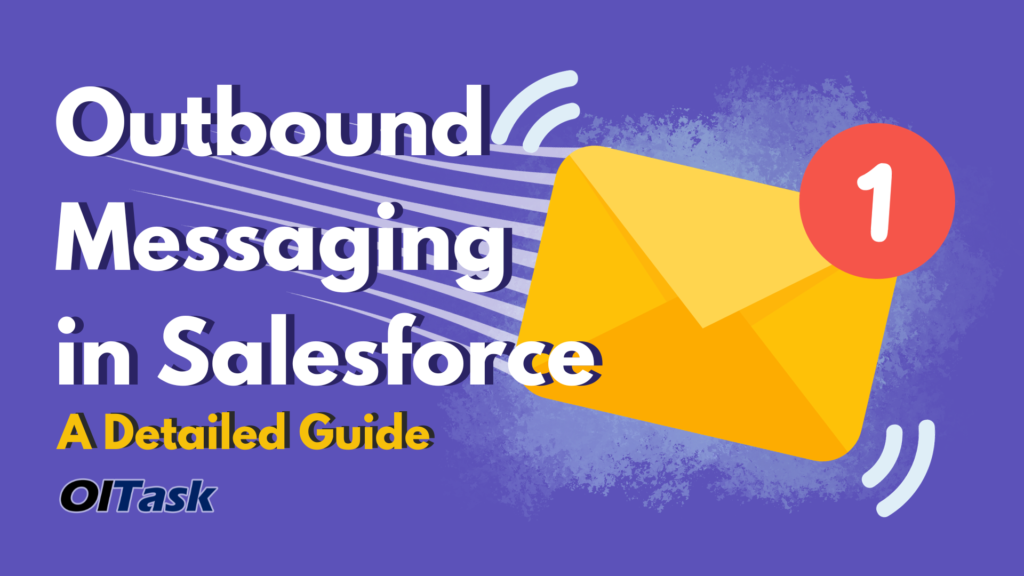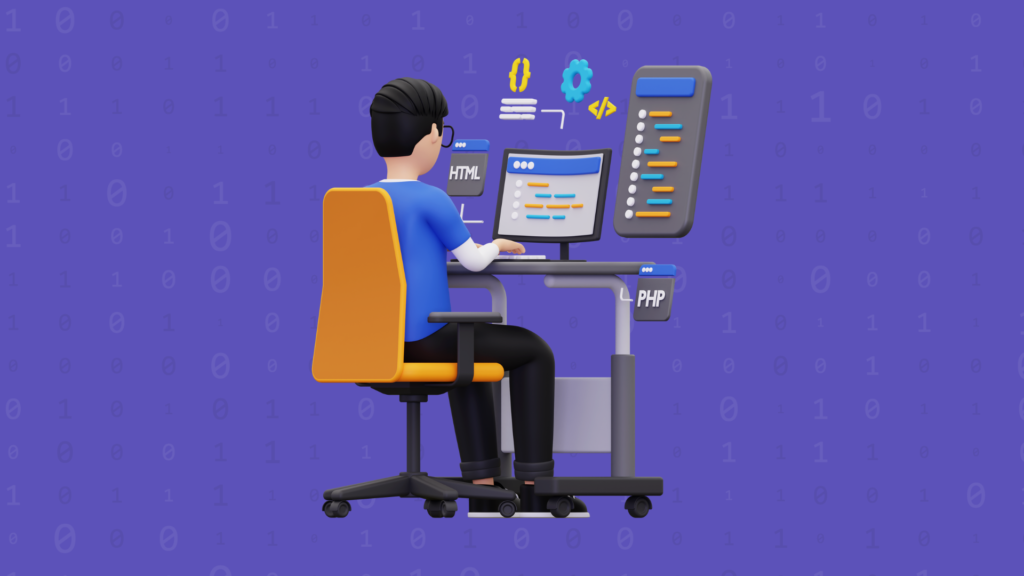Outbound Messaging in Salesforce: A Detailed Guide

In the landscape of customer relationship management (CRM), outbound messaging in Salesforce stands out as a crucial feature for automating and enhancing business communications. This capability allows organizations to send automated messages based on specific triggers or conditions, ensuring timely and effective communication.
Understanding the Essence of Outbound Messaging in Salesforce
Outbound messaging in Salesforce involves the use of workflow automation to send custom messages to external systems. These messages, formatted as SOAP (Simple Object Access Protocol) messages, are triggered by certain events and are essential for maintaining real-time data synchronization between Salesforce and other systems.
Core Components
- Workflow Rule: This determines the conditions under which an outbound message is sent.
- SOAP Message: A protocol for exchanging structured information in web services, used for outbound messages.
- Endpoint URL: The destination address for the outbound SOAP message.
Setting Up and Implementing Outbound Messaging
Implementing outbound messaging in Salesforce is a multi-step process that requires careful planning and setup.
- Create a Workflow Rule: Begin by creating a workflow rule in Salesforce. This rule specifies the event that triggers the outbound message.
- Define the Outbound Message: Next, define the outbound message by selecting the fields to be included and specifying the endpoint URL to which the message will be sent.
Utilizing Outbound Messaging Effectively

Harnessing the full potential of outbound messaging in Salesforce demands a strategic and focused approach. By leveraging this powerful feature effectively, businesses can streamline communication, ensure timely data synchronization, and enhance overall operational efficiency.
Craft Targeted Workflow Rules
Firstly, creating targeted workflow rules is crucial. These rules trigger outbound messages based on specific events or conditions in Salesforce. Therefore, you should carefully define these triggers to ensure messages are sent at optimal times, enhancing the relevance and impact of each communication.
Customize Message Content Intelligently
Next, when setting up a new outbound message, it’s essential to customize the content thoughtfully. Selecting the right fields and data to include in your SOAP message ensures the recipient system receives all necessary information without being overwhelmed.
Set Clear Objectives
Moreover, for each outbound message, establish clear objectives. Whether it’s updating an external system about customer status changes or triggering actions in another application, having well-defined goals for each message is key to streamlined and effective communication.
Ensure Accurate Endpoint Configuration
Additionally, accurately configuring the endpoint URL is fundamental. This URL is the destination for your SOAP messages, so it must be correctly set up to receive and process these messages without errors.
Prioritize Security and Compliance
Security and compliance are paramount, especially when sending sensitive data. Ensure your outbound messages adhere to the highest data security standards, particularly if they interact with external websites or systems.
Test and Validate Rigorously
Before fully implementing your outbound messaging strategy, rigorously test and validate the workflow and messages. This process should confirm the correct formatting of messages and the proper functioning of the receiving system.
Monitor Delivery Status Actively
Actively monitoring the delivery status of your outbound messages is essential. Salesforce provides tools for checking the status and logs of sent messages, helping you quickly identify and address any transmission issues.
Embrace Continuous Improvement
Finally, continually review and update your outbound messaging strategy. This ongoing refinement might involve tweaking workflow rules, updating message content, or enhancing security measures to align with changing business needs and feedback.
Benefits for Businesses
Outbound messaging offers several advantages:
- Automated Data Syncing: Ensures that data across different systems is up-to-date.
- Customizable Workflows: Allows businesses to tailor workflow actions based on specific operational needs.
For a deeper understanding of the practical applications of these features in a sales context, consider reading about What Does Outbound Sales Do, providing valuable insights into the sales process.
Advanced Outbound Messaging Strategies
For Salesforce developers, leveraging advanced strategies in outbound messaging can significantly enhance the efficiency and effectiveness of customer communication workflows.
Tailoring SOAP Messages
- Understanding the structure and nuances of SOAP messages is crucial. Developers should ensure that the SOAP request sent as part of the outbound message contains all the necessary data fields and adheres to the correct format.
Conditional Workflow Rules
- Advanced strategies involve creating workflow rules that are conditional and dynamic. For instance, using workflow rules that trigger outbound messages based on specific customer actions or data changes can lead to more targeted and relevant communication.
Error Handling in Messages
- Implementing robust error handling within the workflow can preemptively address issues in message delivery. This includes setting up notifications or alternative workflows if an outbound message fails to reach its endpoint.
Integrating Outbound Messaging with External Systems

Integrating outbound messaging in Salesforce with external systems can expand the functionality and reach of your CRM strategy.
API Integration
- Integration often involves using APIs to connect Salesforce with external databases, websites, or customer service platforms. This allows for the seamless flow of information and automates various processes like updating customer records or triggering external workflows.
Web Service Endpoints
- When setting up an outbound message, the endpoint URL is critical. This URL should point to a web service that is capable of receiving and processing the SOAP message. Ensuring that this endpoint is correctly configured and secure is crucial for the effective integration of systems.
Real-time Data Synchronization
- The integration enables real-time data synchronization between Salesforce and external systems. This is particularly useful for businesses that rely on up-to-the-minute data for operations, such as e-commerce sites or SaaS platforms.
Troubleshooting Tips for Developers

For Salesforce developers, troubleshooting is an integral part of managing outbound messaging. Here are some tips to address common issues:
Checking Workflow Rules
- If an outbound message is not being sent, verify the workflow rule criteria to ensure they are being met. Also, check if the workflow is active.
Testing Endpoint URLs
- Ensure that the endpoint URL is correct and the external system is configured to receive and process the SOAP messages. Use tools like Postman for testing endpoint connectivity.
Monitoring Delivery Status
- Salesforce provides options to check the delivery status of an outbound message. Review these logs to understand if there are issues in message transmission.
Error Logs and Debugging
- Utilize Salesforce’s error logs and debugging tools to identify where the failure is occurring. This could be in the message format, data fields, or in the communication with the endpoint.
Field Mapping and Data Validation
- Ensure that the data fields in the outbound message match those expected by the receiving system. Mismatches in data types or formats can lead to failures in processing the message.
In conclusion, mastering advanced strategies in outbound messaging, effectively integrating these messages with external systems, and being adept at troubleshooting are crucial for Salesforce developers to maximize the potential of Salesforce as a CRM tool. This proficiency not only enhances operational efficiency but also ensures seamless and effective communication with customers and business partners.
The Future of Outbound Messaging in Salesforce

As we look towards the future, outbound messaging in Salesforce is poised to undergo significant evolution, driven by advancements in technology and changing business needs. Understanding these potential changes is crucial for Salesforce users and developers alike.
Enhanced Automation and Intelligence
- Future developments in Salesforce are likely to focus on increasing the automation capabilities of outbound messaging. This could include more advanced AI-driven workflow rules that trigger outbound messages based on predictive analytics and customer behavior patterns.
Integration with Emerging Technologies
- The integration of outbound messaging with emerging technologies like machine learning and IoT (Internet of Things) offers exciting possibilities. For instance, outbound messages could be used to automatically notify service teams or customers about product updates or maintenance needs based on IoT device data.
Improved Customization and Personalization
- Customization and personalization in outbound messages are expected to reach new heights. Salesforce may offer more sophisticated tools for tailoring messages based on individual customer profiles, enhancing the relevance and impact of each communication.
Streamlined Cross-Platform Communication
- The future of outbound messaging in Salesforce might see more seamless integration across various platforms and systems. This will allow for a more unified and consistent communication strategy across different channels, enhancing the overall customer experience.
Enhanced Security and Compliance
- As data privacy and security continue to be paramount, future updates to outbound messaging will likely include advanced security features. This could involve enhanced encryption of SOAP messages and stricter compliance with global data protection regulations.
User-Friendly Developer Tools
- Salesforce is likely to introduce more user-friendly tools and interfaces for setting up and managing outbound messages. This will make it easier for Salesforce developers and administrators to configure and troubleshoot workflow actions and messaging protocols, even without extensive technical expertise.
Real-Time Analytics and Reporting
- Improved analytics and real-time reporting on outbound messages will enable businesses to better understand and optimize their communication strategies. These analytics might include detailed insights into delivery status, customer engagement, and the effectiveness of different messaging approaches.
In the realm of lead generation, understanding how outbound messaging works within Salesforce’s ecosystem is crucial. For more detailed insights, read our article on How Outbound Message Works in Salesforce.
Optimize Your Business Through Outbound Messaging
Mastering outbound messaging in Salesforce is a step towards optimizing your business’s CRM and communication strategy. For businesses looking to further enhance their Salesforce capabilities, OlTask is here to help. Connect with us today and take the first step towards transforming your Salesforce experience and driving your business growth.
For a real-life glimpse into the world of sales facilitated by tools like Salesforce, explore A Day in the Life of an Outbound Sales Rep, where OlTask offers a comprehensive view of the sales process and strategies.